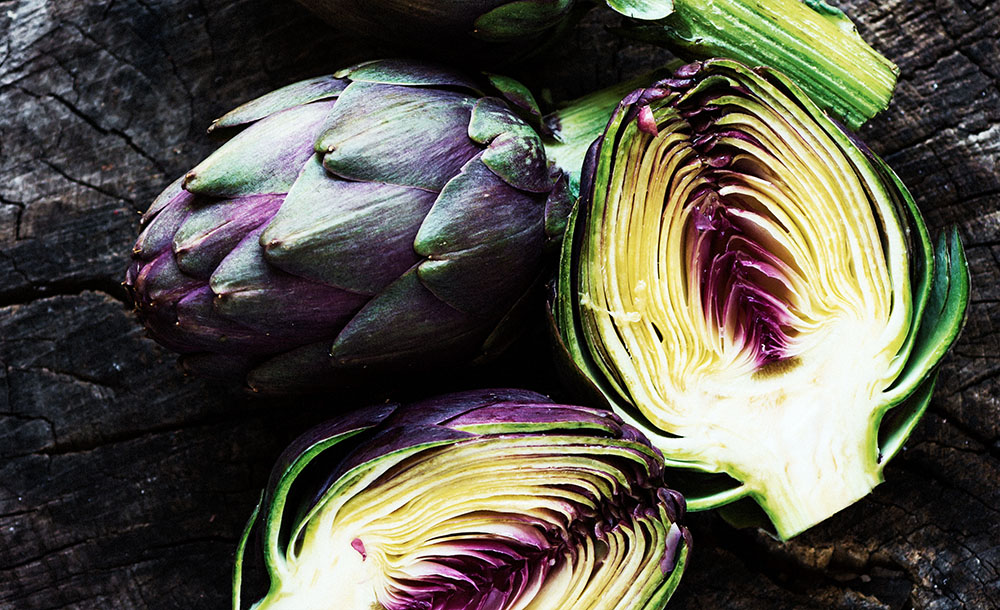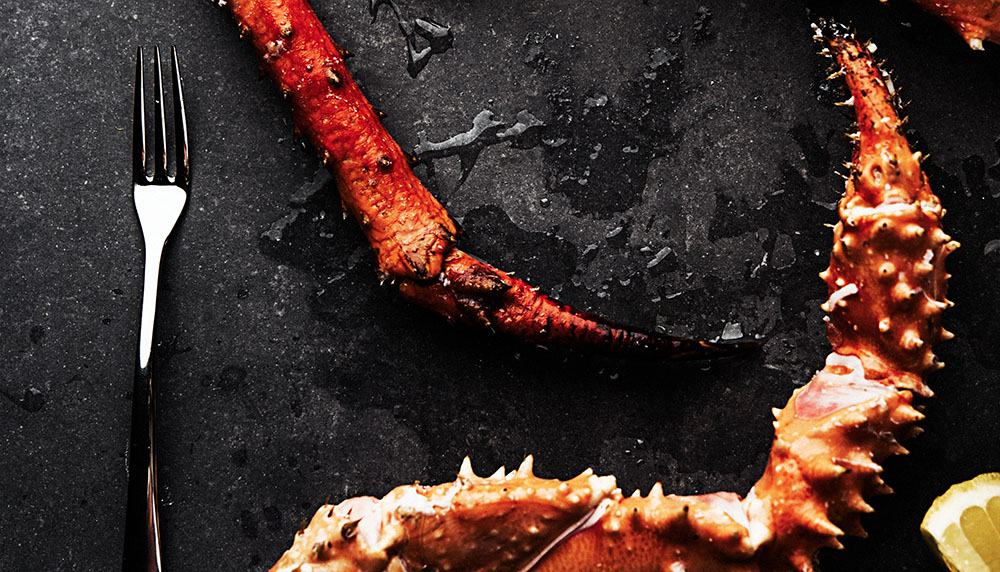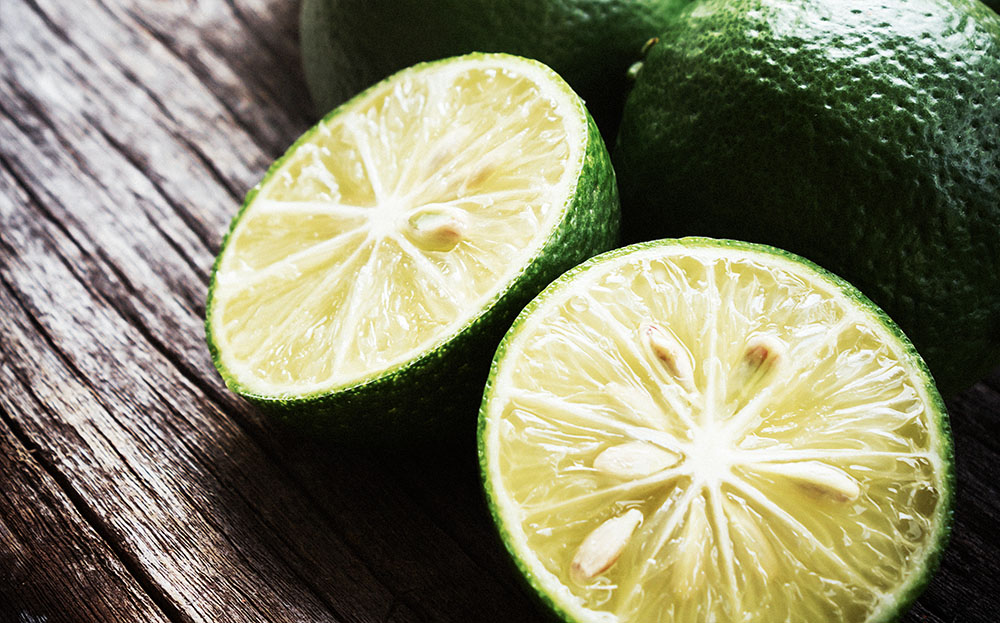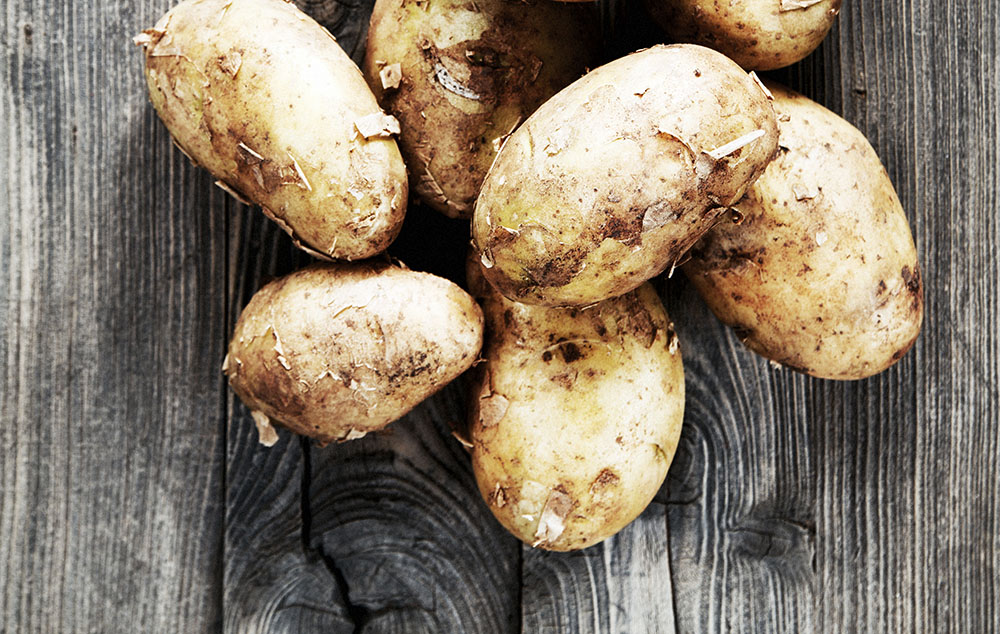
I don’t know how it is at your place, but we have stuff in the bottom of the freezer that I’m willing to bet has been sitting there for a frosty decade. Maybe even longer?
Accuse us of atrocious kitchen management, but stick with me for a minute and I’ll try to make a point about “small food” — a partner story to the “small things” stories peppered throughout Quench this month.
We bought this freezer because a friend of a friend said she had a line on some organic beef, lovingly grown by a farmer in the Fraser Valley. We would share a quarter of a side, all cut, aged, wrapped, identified and dated. Steaks, roasts, ribs, chuck, ground — freeze it and use it whenever. For a long time, our plates were loaded with home-grown Hereford protein.
But, as happens, sometimes we grilled, broiled, roasted, simmered or sautéed too much of our bovine find, and what was left over went back into the freezer for another great meal another day.
Then the seasons changed, and the rhubarb came on, stalking tall in our spring garden. Pies happened. Many of them. We ate one or two with ice cream, and thick, sweet custard. The rest went into the freezer on top of the last of the frosty beef and our often-undated leftovers.
In summer came a tidal wave of tomatoes. We ate the first of them in sandwiches dripping with mayo, then cooked them up into sauces as accompaniments for pasta. Many more were slow-roasted on cookie sheets with salt, pepper and fresh basil, then packed flat into plastic bags and piled on top of the rhubarb pies, leftovers and now-forgotten beef.
Friends, family and food bank? Thanks very much, but we’re long on tomatoes. Frosty beef? Sounds wonderful but, sorry, we’re vegans.
The fridge was not yet full. Two-for-the-price-of-one ice cream? Let’s get four. We’ll have it with the rhubarb pies. Family packs of chicken breasts? Sure. Remains of that splendid chowder? Fill a plastic container or three and poke them into the corners. And so on, until the harvest was in, and winter, colder than the coldest corner of the full freezer, numbed us solid.
You’ve likely noticed that — for any number of good reasons — there’s a wave of “living with less” going on across the land right now. Really tiny houses, furnished with nothing more than is really needed or will fit, are popping up. Cash-strapped millennials and others are saying that less is affordable and less is okay. Minimalists are more into needs than wants. Wants may offer tonnes of eye-popping features, but a lot less benefits.
And what about food? Small food doesn’t mean meals of broiled Brussels sprouts, or sardines instead of snapper — all prepped in an Easy-Bake Oven. But it can mean a diet where less is cooked, where portions are smaller, where there is less waste, where the nutritional benefits we’re looking for come with quality and variety. Not the quantity that makes plates groan, gets scraped into the garbage or goes back into plastic containers to again be forgotten in the freezer.
I have the luxury of being able to buy very small quantities of food almost every day. It means that I get to know the market departments well. I engage the meat and seafood people in conversation, and relish their knowledge; I do the same in produce and dairy. I go home knowing that most everything I have bought will be eaten in that evening’s meal.
I know that Quench readers cleverly visualize how what they are buying will be presented on the plate. It’s part of the shopping adventure. And while consideration can be given to staples and seasonal deals, less and smaller is a satisfying way to go.
As the year began, we resolved to work our way through the freezer. We did this knowing that while many things it contained might be a touch “burnt,” they went in there as good food, which was readily accessible and should be eaten.
Another resolution was that small food, whether it be a crudité platter of snappy vegetables and yummy dips, or a whole meal now and then of totally delicious apps, would be a bigger part of our dining lives than the meat, potatoes and everything else that was part of yesterday’s norm.
Small, when it’s small servings with a big taste, really is beautiful.
And now, if you will excuse me, I will check out that last package of beef at the bottom of the freezer. Marked “chuck,” it could be the start of a small, hearty stew — with no leftovers. Followed by the final one of last season’s rhubarb pies. Spring, after all, is with us, and the new crop is stalking skyward.

classic crab cakes
Small, yes, but mighty filling. Lemon wedges and hot pepper sauce are the ideal accompaniments, with steamed green beans and potato salad to round out the meal.
1/3 cup mayonnaise
3/4 tsp Old Bay or other seafood seasoning
200 g crab meat, picked over and patted dry (about 1 cup)
2/3 cup saltine cracker crumbs (about 16 crackers)
1/4 cup minced green onions
1/4 cup minced red bell pepper
1 tbsp vegetable oil
In a medium bowl, mix together the mayonnaise and seasoning. Add the crab meat, 1/3 cup of the cracker crumbs, green onions and bell pepper. Mix carefully to avoid breaking up the crab meat.
Form the mixture into 4 1/2-inch-thick patties. Place the remaining 1/3 cup cracker crumbs in a shallow bowl. Press the crab cakes into the crumbs, coating completely. (Can be prepared 3 hours ahead, covered and refrigerated.)
In a heavy, non-stick skillet, heat the oil on medium.
Fry the crab cakes until brown and crisp, about 6 minutes per side. Remove crab cakes from the pan and drain on paper towels. Serve immediately.
hot artichoke dip
A distinctive, rich taste, this is a great way to begin, or make a meal.
1 kg artichoke hearts, drained and chopped
1/2 cup freshly grated parmesan cheese
1 cup mayonnaise (1/3 mayo, 1/3 no fat sour cream, 1/3 skim milk yogurt)
1/4–1/2 tsp salt
1/2 clove crushed garlic
Juice from half a fresh lemon
Preheat the oven to 350˚F. Mix together all of the ingredients in an ovenproof dish. Bake for 10 minutes or until hot. Serve with an assortment of crackers or a thinly sliced fresh baguette.

sweet lime chicken
I don’t think there’s a recipe in the world with the word “lime” in the title that doesn’t make you at least look at it. Lime is one of the cleverest little numbers in the whole flavour family, and it’s as versatile as any in the colourful group of citrons. Serve this dish with rice, plus a green and a red vegetable.
2 chicken breasts
1/2 cup dry white wine
1 tbsp orange juice
1 tbsp pineapple juice
1 tsp chopped fresh basil
1 tbsp brown sugar
1 lime
Fresh-ground pepper
Slices of pineapple
Unsalted butter
Preheat the oven to 350˚F.
Butter the bottom of a shallow baking dish. Skin the chicken breasts and place smooth-side up in the dish. Pour the wine and the juices overtop, then top the chicken with the basil, the brown sugar and a liberal sprinkling of fresh-ground pepper.
Place slices of pineapple on top of the chicken. Halve the lime and squeeze as much juice as you can over the chicken. During cooking, leave the halves on the limes to add more flavour.
Cover the dish loosely with a piece of foil and bake for 2 hours. Remove the foil, then bake for about 20 more minutes, until the chicken is golden brown. If desired, you can add more pineapple juice to the gravy, then thicken it with about a teaspoon of cornstarch mixed with cold water. Add a parsley garnish.
sweet and sour onion salad
Lots of taste in this recipe. Primarily from Provence, with influences from other corners of the Mediterranean. Sorry, but I’ve never found an easy way to peel baby onions. However, the battle is worth it.
450 g baby onions, peeled
1/4 cup wine vinegar
3 tbsp olive oil
3 tbsp icing sugar
3 tbsp tomato purée
1 bay leaf
2 sprigs parsley
1/2 cup raisins
Salt and ground black pepper
Place all of the ingredients in a smallish saucepan with 1 1/4 cups water. Bring to a boil and simmer gently, uncovered for 45 minutes, or until the onions are tender and most of the liquid has evaporated. Remove the bay leaf and parsley, check the seasoning and transfer to a serving dish. Let cool and serve at room temperature.

polpettes
Delicious little fried morsels of potato and feta cheese, flavoured with dill and lemon juice.
500 g potatoes
15 g feta cheese
4 spring onions, chopped
3 tbsp chopped fresh dill
1 egg, beaten
1 tbsp lemon juice
Salt and ground pepper
Flour for dredging
3 tbsp olive oil
Boil the potatoes in their skins in lightly salted water until soft. Drain, then peel while still warm. Place in a bowl and mash.
Crumble the feta cheese into the potatoes and add the spring onion, dill, egg and lemon juice. Season with salt and pepper. (Feta is salty, so taste before you add too much salt!) Mix well.
Cover the mixture and chill until firm. Roll chilled pieces into walnut-sized balls, then flatten them slightly. Dredge the polpettes in the flour.
In a frying pan, heat the oil over medium-high heat and fry the polpettes until golden brown on each side. Remove the polpettes and drain on paper towels. Serve immediately.
lamb noisettes
I once made these on a TV show, and earned myself a food processor. Sadly, this prize failed to function after its first, or second, use.
115 g boneless, skinless rack of lamb (loin), trimmed of all silverskin and fat
1 lemon
1 Russet or other baking potato, peeled
2 cloves garlic, finely minced
1 tbsp minced shallots
1 tbsp fresh rosemary, chopped (save tips for garnish)
1 egg white
Clarified butter
Salt and ground pepper
Squeeze a little lemon juice into a bowl of cold water. Grate the potato and add to the bowl.
Cut the lamb into 6 noisettes. Season with salt and pepper.
In a hot pan, sauté the noisettes for 30 to 40 seconds each side. Set aside.
Drain the grated potato and squeeze dry with your hands. Return potato to the bowl. Mix in the garlic, shallots, rosemary, salt and pepper to taste.
In a medium bowl, lightly beat the egg white. Dip each noisette in the egg white, then coat with potato mixture, mostly on the bottom.
Heat a generous amount of clarified butter in a heavy skillet. Carefully lift the potato-covered pieces of lamb into the hot pan.
Sauté until the potato is golden brown. Remove the noisettes from the pan and drain on paper towels. Serve immediately.
